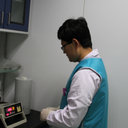Comparative transcription analysis of different Antirrhinum phyllotaxy nodes identifies major signal networks involved in vegetative-reproductive transition.
Cuvinte cheie
Abstract
Vegetative-reproductive phase change is an indispensable event which guarantees several aspects of successful meristem behaviour and organ development. Antirrhinum majus undergoes drastic changes of shoot architecture during the phase change, including phyllotactic change and leaf type alteration from opposite decussate to spiral. However, the regulation mechanism in both of phyllotactic morphology changes is still unclear. Here, the Solexa/Illumina RNA-seq high-throughput sequencing was used to evaluate the global changes of transcriptome levels among four node regions during phyllotactic development. More than 86,315,782 high quality reads were sequenced and assembled into 58,509 unigenes. These differentially expressed genes (DEGs) were classified into 118 pathways described in the KEGG database. Based on the heat-map analysis, a large number of DEGs were overwhelmingly distributed in the hormone signal pathway as well as the carbohydrate biosynthesis and metabolism. The quantitative real time (qRT)-PCR results indicated that most of DEGs were highly up-regulated in the swapping regions of phyllotactic morphology. Moreover, transcriptions factors (TFs) with high transcripts were also identified, controlling the phyllotactic morphology by the regulation of hormone and sugar-metabolism signal pathways. A number of DEGs did not align with any databases and might be novel genes involved in the phyllotactic development. These genes will serve as an invaluable genetic resource for understanding the molecular mechanism of the phyllotactic development.


